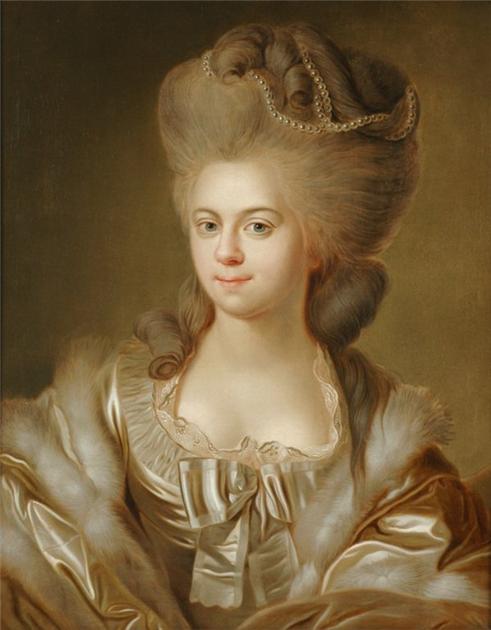by Scott Mehl © Unofficial Royalty 2018
Grand Duchy of Oldenburg: The Counts of Oldenburg died out in 1667, after which Oldenburg became a duchy until 1810, when it was annexed by the First French Empire under Napoleon, Emperor of the French. After the final defeat of Napoleon, the Congress of Vienna elevated the Duchy of Oldenburg to a Grand Duchy in 1815. The Grand Duchy of Oldenburg consisted of three widely separated territories – Oldenburg, Eutin, and Birkenfeld – now in the German states of Lower Saxony, Schleswig-Holstein, and Rhineland-Palatinate. With the fall of the German Empire at the end of World War I, Friedrich August II, the last Grand Duke of Oldenburg was forced to abdicate his throne on November 11, 1918.
********************

Peter I, Grand Duke of Oldenburg – source: Wikipedia
Peter I was the second Grand Duke of Oldenburg and like his predecessor, he did not formally use the title of Grand Duke. He was born Prince Peter Friedrich Ludwig of Holstein-Gottorp in Riesenberg, Kingdom of Prussia now Prabuty, Poland, on January 17, 1755, to Prince Georg Ludwig of Holstein-Gottorp and Princess Sophie Charlotte of Schleswig-Holstein-Sonderburg-Beck. Peter had two older brothers:
- Friedrich (1751-1752) – died in infancy
- Wilhelm (1753-1772) – died in his teens
After both parents died in 1763, Peter was raised at the court of his uncle Friedrich August, Prince-Bishop of Lübeck and later the first Duke of Oldenburg, and later at the court of Catherine II (the Great), Empress of All Russia. He received his initial education privately before studying for four years in Bern and then another four years in Bologna. Peter also embarked on a military career, serving as an officer during the Russian-Turkish War in 1774.

Duchess Friederike of Württemberg. source: Wikipedia
On June 6, 1781, Peter married Duchess Friederike of Württemberg, the daughter of Friedrich II Eugen, Duke of Württemberg and Friederike Dorothea of Brandenburg-Schwedt. Before she died in 1785, Peter and Friederike had two sons:
- August I, Grand Duke of Oldenburg (1783 – 1853) – married (1) Adelheid of Anhalt-Bernburg-Schaumburg-Hoym, had issue; (2) Ida of Anhalt-Bernburg-Schaumburg-Hoym, had issue; (3) Cecilia of Sweden, had issue
- Duke Georg (1784-1812) – married Grand Duchess Ekaterina Pavlovna of Russia, had issue

Friedrich August I, Duke of Oldenburg. source: Wikipedia
In July 1785, Peter’s uncle Friedrich August I, Duke of Oldenburg died and was succeeded by his son Wilhelm. However, Wilhelm was mentally incapacitated, and Peter was appointed Regent, as well as Prince-Bishop of Lübeck. As Regent, Peter established one of the first public Savings Banks, which helped to support widows and orphans. In 1803, the Prince-Bishopric of Lübeck was secularized and became the Principality of Lübeck. This new principality was given to Peter and became part of the Duchy of Oldenburg.
Despite having previously agreed to the Sovereignty of Oldenburg in 1807, Napoleon’s forces occupied the Duchy in 1810, sending Peter into exile in Russia. He returned in November 1813 and once again took control of Oldenburg. Two years later, his son oversaw the duchy’s elevation to a Grand Duchy at the Congress of Vienna. Peter established a new government for the Grand Duchy, introduced general conscription, and established the Oldenburg Infantry Regiment. Upon his cousin’s death in 1823, Peter became the reigning Grand Duke of Oldenburg. However, like Wilhelm, he chose not to use the title of Grand Duke and was styled as Duke of Oldenburg.
Just short of six years after assuming the throne, Peter suffered a stroke and died in Wiesbaden, Duchy of Nassau, now in Hesse, Germany, on May 21, 1829. He was buried nearly two months later, in the Ducal Mausoleum in St. Gertrude’s Cemetery in Oldenburg, Grand Duchy of Oldenburg, now in Lower Saxony, Germany. He was succeeded by his elder son August who became the first ruler of Oldenburg to use the title of Grand Duke.
This article is the intellectual property of Unofficial Royalty and is NOT TO BE COPIED, EDITED, OR POSTED IN ANY FORM ON ANOTHER WEBSITE under any circumstances. It is permissible to use a link that directs to Unofficial Royalty.
Oldenburg Resources at Unofficial Royalty
